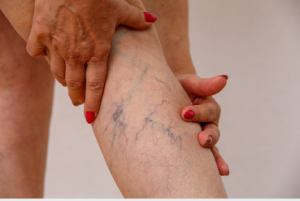Removing your varicose veins is a great way to care for your health and avoid complications. It also reduces your risk of developing deep vein thrombosis, swollen varicose veins, and mobility and activity levels.
 Reduces mobility and activity levels
Reduces mobility and activity levels
Among the myriad medical maladies afflicting aging humans, varicose veins are but one. This disease afflicts both men and women, although the latter are more likely to display the disorder. This condition is characterized by inflammation of the vein wall and related vascular complications. Inflammatory processes are aided and abetted by several factors, including, but not limited to, genetics, age, gender, and smoking habits. The risk of varicose veins is highest in the elderly, but it can be controlled or even cured with proper medical care. However, as with most diseases, treatment is a long and difficult road.
One of the best treatments for varicose veins involves a surgical procedure that is relatively low risk. This procedure involves the removal of unsightly varicose veins. The process is accompanied by a short course of anti-inflammatory medications and is most effective when performed as part of a multi-pronged treatment regimen. The effects of this therapy can last for decades. The most effective treatments are performed by a team of experienced physicians who use state-of-the-art technology and anesthesia.
During the procedure, patients are asked to perform a series of tests to evaluate the surgery’s effect on their vascular system. Using a series of vascular ultrasound scans, patients are monitored for changes in the veins’ diameter and the vein walls’ elasticity. It is estimated that the efficacy of these treatments ranges from 60 to 80 percent. This treatment is particularly beneficial for patients with large varicose veins or symptomatic venous thrombosis.
Reduces risk of developing deep vein thrombosis
Despite varicose vein surgery’s generally low risk of developing deep vein thrombosis, a new study shows the procedure can reduce the risk of a pulmonary embolus (PE) complication. This type of embolus is a blood clot that travels through the bloodstream and lodges in the lungs, causing serious health complications.
In this study, patients who had surgery for varicose veins were reassessed in a year to see if they were at risk for PE. The patients were also asked if they had any symptoms of a DVT, such as swelling or pain. If they had symptoms, they were instructed to contact their physician.
The Cox proportional hazard models were used to examine the HRs of various medical conditions in patients with varicose veins. The HR for a DVT was higher than for a PE, but the difference was not statistically significant. The study was designed to evaluate the effects of ETA on the complication rate in the Asian population.
The study found that patients who underwent ETA for varicose veins significantly reduced the incidence of thromboembolism. The study also found that patients who underwent ETA had a decrease in the risk of CAD (cardiovascular disease) and peripheral artery disease.
In addition, the study found that if the patient did not have varicose veins, the risk of developing a pulmonary embolus was reduced by almost 50%. The study also found that the risk of a clot was reduced by half if the patient had been previously diagnosed with a blood clot in the leg.
Despite varicose vein surgery’s low risk of developing a DVT, patients should be aware of the risks of pulmonary embolism and should make sure to monitor their legs for any swelling or pain. If they suspect a clot, they should contact their physician.
Reduces swollen varicose veins
Know that varicose vein removal SA involves a combination of treatments. The treatments can help relieve pain and discomfort, improve circulation, and prevent further vein damage. It is important to stay active and healthy.
A healthy diet is important to reduce swelling and improve blood flow. It includes fibre-rich foods like whole grains, fruits, and vegetables. It can also help to cut down on sodium-rich foods. These foods cause water retention in the body.
Exercise can also help to improve circulation. Walking and swimming can help to keep your heart beat up and increase blood flow. Wearing support stockings can help to improve circulation. These stockings can be purchased in most pharmacies.
Using essential oils is also a great way to reduce the symptoms of varicose veins. These oils can be blended into massage oil and applied to the affected area. Some people soak a washcloth in the oil to apply to the area.
A combination of compression stockings and massage can also help to reduce the symptoms of varicose legs. Loose-fitting clothing is also helpful, allowing blood to flow more easily.
You may want to consider a surgical procedure if you have severe varicose veins. Varicose vein surgery is a procedure that removes the affected veins and can be performed in the office. However, the procedure has some side effects. It can also cause new varicose veins to form.
A combination of natural essential oils can reduce the symptoms of varicose leg veins. These oils can be used in conjunction with a healthy diet to help to heal your veins.
The use of grapevine leaves has also been reported to help reduce the symptoms of varicose veins. Grapevine leaves contain flavonoids and antioxidants. They are also known for their homeostatic and anti-inflammatory properties. You can make a solution from grapevine leaves and apply it to your varicose veins.
Another home remedy for varicose veins is to use olive oil. Warm olive oil to the affected area can reduce pain and discomfort.